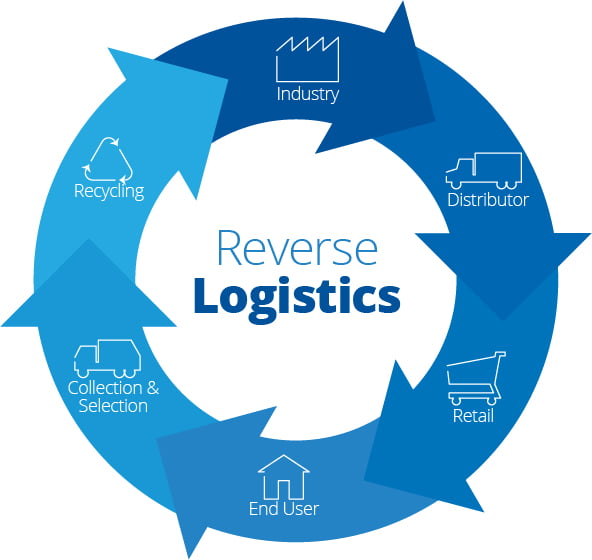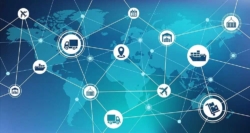The interesting term “reverse logistics” was first introduced in 1992, in a white paper authored by James R. Stock and published by the Council of Logistics Management in Illinois. Almost thirty years since its coinage, and, in the midst of a thriving modern industry, reverse logistics is now understood to pertain to the following:
• Product returns due to defects or damage;
• The management and resale of surplus products, and;
• Proper disassembly and disposal of unusable products.
In other words, whereas traditional logistics aims to move products down the supply chain from the seller to the customer, reverse logistics have to do with taking one step backward: moving the product from the customer back to the seller.
Of course, it’s an intimidating new challenge for sellers to confront. There’s no hiding that reverse logistics consumes a lot of time and money, just for the sheer volume and variety of actions that need to be taken. In some industries, like publishing and retail, companies already prepare to see at least 20% of their yearly stock to get damaged and be subject to the returns process. Luckily, in North America, the logistics industry itself has caught up. There are systems in place like that of Red Stag Fulfillment, one of the many order fulfillment services USA-based companies use.
What you yourself will learn if you work in the supply chain is that not all will be lost when a product gets damaged, turns out defective, or ends up being unsold. It’s time to understand the value of reverse logistics and what you can do to bridge the gap between great sales and loss of revenue. Here’s what you can do to turn that one step backwards into several steps forward for your business.
1. Put supply chain analytics at the center of your reverse logistics process. All problem-solving efforts in reverse logistics can be traced back to four key analytics in the supply chain, namely:
a. The volume being returned. Ask yourself: is a lot of product being shipped back to the company? What do you think are the causes?
b. Percentage of sales lost. Is a large enough chunk of sales being lost to returns? What are the exact numbers?
c. Product condition. What’s the condition of the products after their shipment? Is this a recurring problem? What aspect of quality assurance should the supplier then concentrate on?
d. Effect on the company’s financial value. Given that returns are an inevitable part of managing store inventory, how do you prevent significant losses from happening?
If your process flow can answer these questions, it’s safe to say that your decision making along the supply chain will be accurate, cost-effective, and adaptable to your situation.
2. Contract with a third-party logistics provider (3PL) that’s well-versed in the returns process. If you choose to explore a 3PL model, like that of industry leader Red Stag Fulfillment, you will want additional expertise in handling returns. Green flags for a 3PL provider include clear return protocols, the promise of quick and efficient refunding once a customer’s request is verified, and a customized shipment and returns approach for the type of product your business sells.
3. Devise a system that can differentiate between types of returns and then commence appropriate action from the seller. The difficult thing about reverse logistics is the disparate type of action needed for each type of concern. Your approach for handling returns due to damage should be different from how you handle defective products or wrong shipments. With that said, it would be good to have a system that helps pre-sort the returns as related to damage, defect, or wrong shipment so that the seller can quickly tailor their action. One example of such a system in place is having check-boxes for the type of return in a customer complaint form.
4. Designate strategic centers per type of return. In reverse logistics, location is key. It will save a lot of grief in the supply chain to allot particular spaces to deal with different types of returns. For example, if a product is being surveyed for defects, it should be sent to the inspector’s office in the company headquarters. On the other hand, if the product is damaged beyond repair, it should be shipped to a designated facility for dismantling and recycling. Lastly, if it’s in good enough condition for resale, it should go to the company’s designated distribution center before it reaches partner stores for surplus resale, and so on.
5. Treat the reverse logistics process as an opportunity to be more in tune with your customers. Customer service is crucial in this phase of supply chain management. If you want to keep your customers despite a mistake in shipment, it’s doubly important for your customer team to make them feel like they are being listened to and that their shipment-related problems will be rightfully addressed. That way, you will save face and give them reasons to keep patronizing your company.
Ultimately, your reverse logistics process should encompass the following: reducing costs, improving your shipment services, retaining your customers, and adapting the best practices for handling products—from the assembly phase to the order and shipment phase, to the disassembly phase.
Loss is inevitable and part of the risk of running a business. But as this feature has hopefully proved, there are several things a company can do to mitigate such loss—and use reverse logistics to recover golden opportunities.




